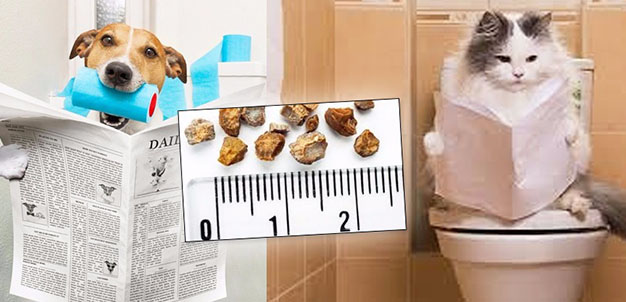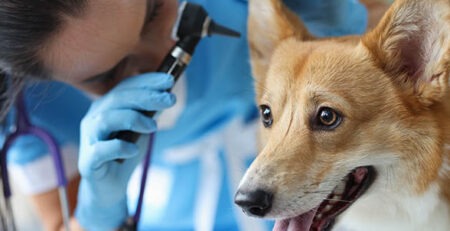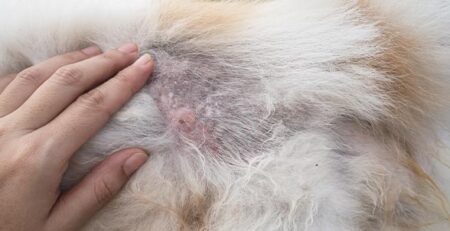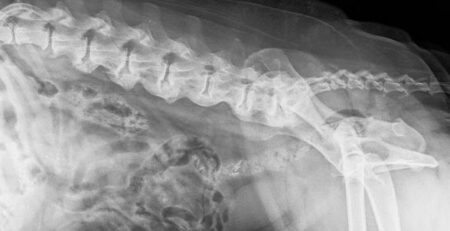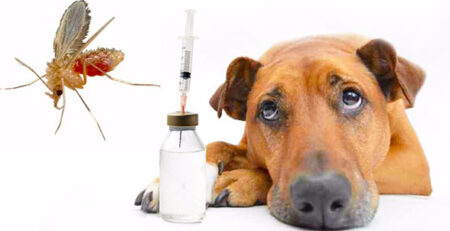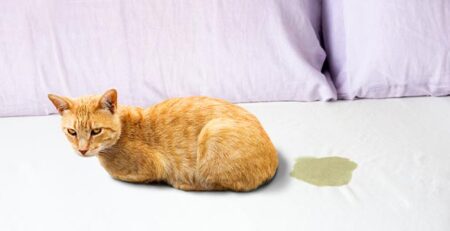Table of Contents
If your dog or cat has “kidney stones,” it doesn’t mean he or she is good at math, but it means he or she can’t excrete certain minerals with pee.
If you want to prevent him from going into lockdown, risking his life, and having to undergo emergency surgery, then learn to recognize the symptoms of this insidious disease.
Kidney stones in dogs and cats form in the urinary tract when urine has high concentrations of mineral salts that do not dissolve and are not excreted with urination as they normally should be.
Kidney stones in dogs and cats can give rise to a fairly complicated clinical picture and compromise your pet’s quality of life.
The mineral salt crystals, as they aggregate, form stones that can be microscopic in size or so large that they even occupy cavities within the kidneys.
The disease is called nephrolithiasis or urolithiasis, and the terms indicate the presence of stones in the kidneys and urinary tract, respectively.
From what mineral salts are stones formed?
- struvite: formed from phosphate, ammonium and magnesium ions
- Calcium oxalate: along with struvite oxalates are the most common in dogs and cats
- ammonium urate: these are much less frequent, but their presence is often found in conjunction with liver disease
What are the causes that contribute to their formation?
Contributing to their formation are not only the pH of the urine but also the hydration and nutrition of the dog or cat.
What’s more, stones can also be caused by urinary or kidney infections, medication intake, age, or the predisposition of the animal’s own breed.
Dog and cat breeds most prone to kidney stone formation
Among cats, Burmese and Persians are particularly prone to oxalate stone formation.
In dogs, small sizes such as the Bichon Frisé, Dwarf Schnauzer, Shih Tzu, and Yorkshire Terrier are prone to urinary stones.
The Dalmatian is at greater risk of ammonium urate stones because of a genetic abnormality that does not allow it to degrade uric acids.
Male specimens are more prone to urinary stones than females because of the anatomical conformation of the urethra, which runs from the bladder to the tip of the penis, thus long, very thin and easily clogged.
The risk increases in individuals who are overweight and sterilized.
What symptoms do dogs and cats suffering from stones exhibit
- if the animal strains when it needs to urinate, trying several times to pee but to no avail, it is likely to have pain
- Or he may manifest abnormal urinary incontinence caused by bladder distention
- because stones cause micro-lesions in the urinary tract, drops of blood may appear in the urine (hematuria)
Frequent urination, increased thirst, recurrent urinary infections, poor appetite, vomiting, weight loss, and abdominal pain are other symptoms attributable to the presence of stones.
The presence of stones puts the health of dogs and cats at serious risk
Stones can block the flow of urine and cause the kidneys to swell-a urinary blockage is a serious emergency that can even prove fatal.
From the examination of the specimen, your Veterinarian will obtain a range of information useful in diagnosing the disease: density and pH of the urine, presence of blood or infection.
In addition, abdominal ultrasound or radiography can visualize the presence, exact location, and size of stones.
How to treat kidney stones in dogs and cats
Treatment depends on the symptoms, their location, and size and can be of two types:
- Specific diet accompanied by antibiotic. The goal is to dissolve stones and promote their expulsion while preventing infection. There are kibble or medical food on the market.
- Surgical operation in the most severe cases with large stones that are very difficult to expel, do not dissolve, or cause severe pain or damage to the ‘animal, such as an obstruction of the urinary tract: in such cases, they must be extracted immediately.
Stones can reappear even after they have been removed so it is critical to prevent their formation.
How to prevent kidney stone formation in dogs and cats
The first preventive action is to increase the amount of water ingested by the animal.
Make sure your dog or cat always has the right amount of fresh water available each day, and always clean the bowl to minimize the risk of bacterial growth.
If your pet does not consume enough fluids throughout the day, add water to the kibble and supplement his diet with wet food to ensure he gets more fluids.
Proper nutrition is already a form of prevention
Foods excessively rich in calcium, magnesium, phosphorus, and protein increase the concentration of minerals and proteins in the urine.
Dogs and cats should consume foods low in these nutrients (while not causing deficiencies) to prevent stone formation and help dissolve very small stones if already present.
How to balance nutrients in case of home feeding
Consult an animal nutrition expert to ensure that the meals contain vitamins and minerals in balanced amounts.
There are also specific supplements (available as pills, capsules or chewable tablets) that can improve the health of your dog or cat’s urinary system, but always consult your Veterinarian before administering them.
Come and see us even if only for a preventive consultation: the Veterinary Doctors on our staff are always at your disposal to assess the health status of your dog or cat, and if necessary, your four-legged friend can undergo all the specific examinations that the case requires directly at the facility.
Please note that Clinica La Veterinaria is always open h24 every day including holidays and with First Aid service from 8 pm to 8 am.
For the joy of seeing them HAPPY.

